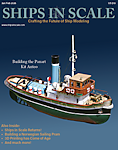- Joined
- Dec 1, 2016
- Messages
- 6,349
- Points
- 728

This is an extremely valuable posting and well stated with the photos demanding serious consideration for the model builder (myself and the options that I consider but may not yer decide). Thanks for the time for SoS.. Rich (PT-2)
thank you









